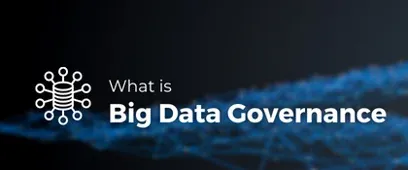Back to Blog
June 24, 2015
Lisa
en
Demystifying Big Data Governance: A Comprehensive Guide to Getting Started
Big Data

Among all the big data-related opportunities and concerns, one that is demanding increased attention and is most challenging is data or information governance. Growth in the business need for data and analytics has put pressure on systems to deliver data rapidly. Diverse and complex data from multiple sources has made governance difficult to achieve. Proper governance can increase and make data more useful and valuable to the business.
Information Governance refers to the combination of people, processes, procedures, and technology that ensure business data is trusted and secure and can be leveraged as an enterprise asset.
If data governance grows, what will an organization do? How does data governance add value to the organization?
The answer is here – Data governance addresses a wide range of needs related to protecting and securing data, checking its adherence to standards, and its availability and usability to the organization. A systematic approach can help the organization discover IT assets and govern data effectively. The approach focuses on major elements of Information governance, which are –
-
Data integration
-
Data quality
-
Master data management(MDM)
-
Data lifecycle management
-
Data security
Organizations have realized that they are accumulating an ever-increasing amount of data but not gaining business insights from it (also consider checking out this perfect parcel of information for a data science degree). This is because there is no defined process for the effective transformation of data into information. Data Governance program treats organizational data as an asset by enforcing consistent rules, regulations, definition,s and security measures.
Data governance is not meant to solve all business or IT problems in an organization. The main objectives of data governance are -
- To outline, approve, and communicate data strategies, design, policies, processes, and metrics
- To track and implement security measures to data policies, standards, architecture, and procedures
- To track and manage the delivery of data management policies and services
- To manage and resolve data-related issues
- To understand and promote the value of data assets
The quality of the insights depends on the quality of the data (also consider checking out this career guide for data science jobs). Is the data correct, complete and consistent across the enterprise? Does it have the most up-to-date information about the customers and prospects? It is not enough to just collect the data. Organizations need to build an effective strategy to govern the data efficiently.
Organizational best practices for effective data governance are:
- Define data standards and metrics for adhering to those standards
- As data flows through the organization’s systems and databases, ensure data quality at the point of origin and at key checkpoints
- Adopt an exclusive, persistent key to identify the data and all related information
- Categorize and organize your data, establish a nomenclature and taxonomy to identify data
- Implement a strategy to update constantly changing information
These practices must be applied across the organization to ensure consistent handling of data.
Conclusion
Organizations should invest time and resources to build an effective governance structure without which they won’t be able to handle terabytes of structured and unstructured data or leverage analytics for predictive insights. Big data is just not about the data. It’s also about taking the right steps to organize data and third-party assets in a systematic way to ingest and make sense of the data.